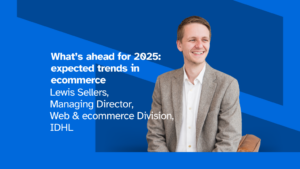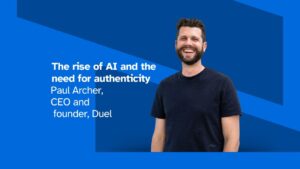By Oliver Walker, MD, Hookflash
AI, influencers, automation, the metaverse (ew, yuck) – there’s a lot for marketers to think about and prioritise. And with so many distractions available to us, getting clear on the specific investments that will drive real business impact is critical.
Among the biggest challenges that we are seeing is that getting traffic to a brand’s website is getting harder. Contentsquare highlights that traffic from a benchmark of over 3,500 websites fell by 3.6% year-on-year.
And once you get your hard-won visitors on to your site, the post-click experience (PCE) had better be good or you risk losing them. To someone who’s doing it better.
To understand what will drive business impact, let’s first look at what’s creating a world where brands are getting less and less traffic.
Problem number one: Marketing budgets have been squeezed, consistently, since the pandemic. A Gartner report found that marketing budgets as a percentage of annual revenue have fallen consistently since 2016 and are now at the lowest level they’ve been, aside from 2021.
That’s compounded by problem number two. No one likes a problem number two. Especially when it’s budget-related again. Google’s average cost per click (CPC) increased 13% year-on-year in Q1 this year. That’s an increase on the 9% increase we saw in Q4 last year.
So, budgets are shrinking, and costs are rising. You’re reaching fewer people and getting fewer people to your site.
Well at least there’s trusty organic search. That’s not been affected too much. Oh wait, that massive change – AI Overviews – is live in the UK, having been rolled out in the US and other markets over the past year.
That’s only going to further increase the stat that, almost 60% of Google searches end without a click, according to SparkToro’s 2024 Zero-Click Search Study. Whether that’s because it was a local search, a search that needed refining or a search where the result was surfaced on the SERP itself e.g. featured snippets.
So, problem number three is that the traffic you get from organic is not as high as it was and is likely to shrink further.
But the challenges don’t just stop with getting people to the site. It’s also on the website.
Our fourth problem is that this battleground has become fiercer than ever too. As many as 32% of all customers would stop doing business with a brand they loved after one bad experience, says PWC’s future of CX report.
Getting that website experience right is imperative.
So, what does that all mean for marketing and ecommerce teams?
It means the post-click experience has never been more important.
And not just that. You’ve got another new wicked-cool acronym to add to your vocabulary.
So, if the PCE is so critical, what are the keys to getting the most out of your website?
The most important thing is to recognise that most things that get changed on the website don’t work.
Optimizely recently did a study that provided a lot of insight into the impact of experimentation.
Out of 127,000 website experiments they found that that only 12% of website changes were successful.
Making sure you understand what your customers and website visitors need you’re your website; expect from your website, will inform whether those needs and expectations are met.
That means investing in analytics and research – whether it’s web analytics, voice of customer, UX interviews or behavioural analytics. Understand the challenges you need to solve for and build hypotheses accordingly.
Once you’ve done that, the second critical point is that if you run website tests at scale, to learn what works. Optimizely also released some benchmark results that help guide these website testing programs.
Namely, where possible, testing more variations against an original page, drives the biggest impact. Four variations double the win rate, albeit you need to have a lot of traffic to test that many variations. It also found that in those tests where multiple elements were changed, this also increased the win rate.
And finally, the third critical point is considering context. Who are your users? And what does their digital body language tell us about what might be appropriate to show them? There are plenty of tools that surface information that can be used to personalise pages, but an incredibly simple one is what channel they’ve come from.
Optimizely found only 50% of tests have an audience condition but that they drive 41% more impact. You might send your email traffic and paid social traffic to the same page but wouldn’t expect they have the same context. Focus on personalising the page appropriately to cater for what they’ll know about you.
Getting the website experience right doesn’t just mitigate some of the problems highlighted. It also yields better returns in its own right, and according to Adobe, 86% of people will pay more to receive a better experience.
My advice? With so much to distract us, from the Brat summer to the latest developments in AI, or Google’s latest announcement, if you want to drive real business impact, you could do a lot worse than embracing PCE as your shiny new thing.








